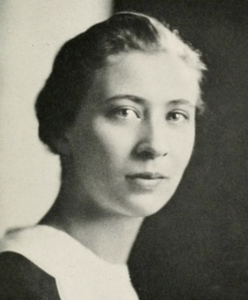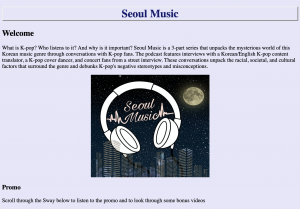One of the main components of the Digital Scholarship Summer Fellows Program (DSSF) that drew me to apply was the archival research that I would be able to do. The past semester I had taken an introductory Museum Studies course where I worked in the archives to create an exhibition proposal. My group and I would sometimes spend hours in the Special Collections room getting lost in all the photos, scrapbooks, and documents. It was tedious, but I loved it. I entered the summer excited to get back into archival work, but also ready to challenge myself to discover new skills.
This summer, the DSSF team worked on a digital exhibit showcasing research on two interracial conferences hosted by Bryn Mawr students in 1924 and 1931. When it came time to divide roles, I knew that I wanted to work as the Media and Metadata Editor. With this role I would be able to continue working with archives while also managing metadata, something that I was more unfamiliar with. My job was to gather information on all of the necessary images, documents, and archival material for the website. Metadata information would typically include a title, description, author, source, publisher, dates, and rights. Therefore, another task of mine was to make sure that we acquired proper permissions for media items owned by other institutions.
As I had been gathering documents and images, I was faced with an important archival dilemma that I had learned briefly from my museum studies class. The issue was about control and the power that content editors have over items to reshape their meaning. After learning how to use Adobe Photoshop through the program, I had been going over older images to clarify them. As I was editing a yearbook photo of one of the 1924 attendees, I found myself going a little overboard in blurring the scratchy resolution and fine-tuning every inch of the photo to make it as close to a modern image as I could. I stopped myself and realized that by doing too much editing I was potentially losing some of the historical context of the photo. I considered the significance of the slightly grainy quality of the photos that speak to the time period that the photo was taken. I clicked the undo button a couple times on the photo and learned to let go of my perfectionist side and keep the photos as they were unless there were any glaring scratches or marks.
A similar realization came when I would write descriptions for the items’ metadata. I had to be cautious in writing a very objective description of what the object is without adding my personal interpretation or opinion of the time. I also had to be careful not to assume what my audience may or may not know already about the exhibit and our research. Now that I am nearing the end of the editing process I have learned and reflected on how to best represent these items. It’s been incredibly rewarding to be able to see the items that I have edited and cleaned up finally make their way into the published website.


While I knew that I was excited to do archival research, something that I was concerned about when I began the fellowship was coding and learning other computer science skills. I had never learned how to code and after a daunting experience trying an intro computer science course for a day last semester, I had decided that computer science was not for me. Unfortunately, I had really wanted to learn computer science, but I had felt so lost during the class while it seemed to come so naturally for other students. The fellowship made me face my concerns head-on; during the first two weeks we began to learn HTML and CSS. Entering the first tutorial I was prepared to fall behind, but I was pleasantly surprised to see myself following along nicely with the team and understanding what we were learning. Of course, there were times where I was confused or when I needed more time on my own to practice a concept, but I was proud that I would always complete my tasks and lessons in the end. As my technological capacities grew, so did my confidence. I appreciate that the learning environment of the fellowship allowed personal time in between lessons to fully digest the exercises and lessons of the day. By the end of the second week, I had designed and published my own website! I think that small milestones like these helped me get over my doubts that computer science was something that I wouldn’t be able to succeed in. As an English major, I felt that it would be okay to write off my struggles with computer science. But after everything I’ve learned through this fellowship, I’ve realized how vital and universal these new digital competencies are.

This fellowship has been a great opportunity for me to expand upon skills that I were already familiar with in different settings, as well as an opportunity to change my perspectives on digital competencies that I had previously written off.